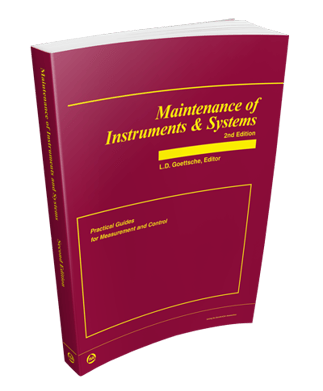AutoQuiz is edited by Joel Don, ISA's social media community manager.
This automation industry quiz question comes from the ISA Certified Control Systems Technician (CCST) program. Certified Control System Technicians calibrate, document, troubleshoot, and repair/replace instrumentation for systems that measure and control level, temperature, pressure, flow, and other process variables. Click this link for more information about the CCST program.
A properly designed control panel is fed by one 120VAC circuit. A set of 24VDC redundant power supplies feeds the transmitter and controller for a temperature control loop. The loop is protected by a single removable fuse. It is necessary to replace a damaged wire inside the control panel that is part of the temperature control loop. What is the minimum course of action to take before replacing the damaged wiring?
a) Just go ahead and replace the wire. The largest voltage that could be present is 24VDC, which cannot hurt the technician.
b) Remove the 24VDC power feed wiring to the temperature control loop before replacing the damaged wire.
c) With the proper personnel protective equipment, pull the fuse on the level control loop circuit and test for "dead circuit" with a multi-meter to insure no voltage is present on the loop before replacing the wires.
d) Check the level transmitter front LCD. If it indicates that no power is present, replace the wiring.
e) None of the above
Answer A is not correct. Even exposure to a live 24VDC circuit can cause injury (although not to the degree that 120VAC can).
Answer B is not correct because removing live power feed wires from a loop is not safe to do while the circuit is hot. There is a likelihood of creating a short circuit using this procedure.
Answer D is not correct because indication of zero volts at the device does not guarantee that there is no voltage present in the control panel.
The correct answer is C. Always use the proper PPE for the job. Circuits should be disabled using only the devices provided (removable fuses, disconnect switches, etc.). All circuits to be worked on should be tested with a multi-meter prior to performing the work to ensure that no voltage or current is present. Even safer would be to disconnect the 120VAC feed to the panel, if possible.
Reference: Goettsche, L.D. (Editor), Maintenance of Instruments and Systems, 2nd Edition

About the Editor
Joel Don is the community manager for ISA and is an independent content marketing, social media and public relations consultant. Prior to his work in marketing and PR, Joel served as an editor for regional newspapers and national magazines throughout the U.S. He earned a master's degree from the Medill School at Northwestern University with a focus on science, engineering and biomedical marketing communications, and a bachelor of science degree from UC San Diego.




